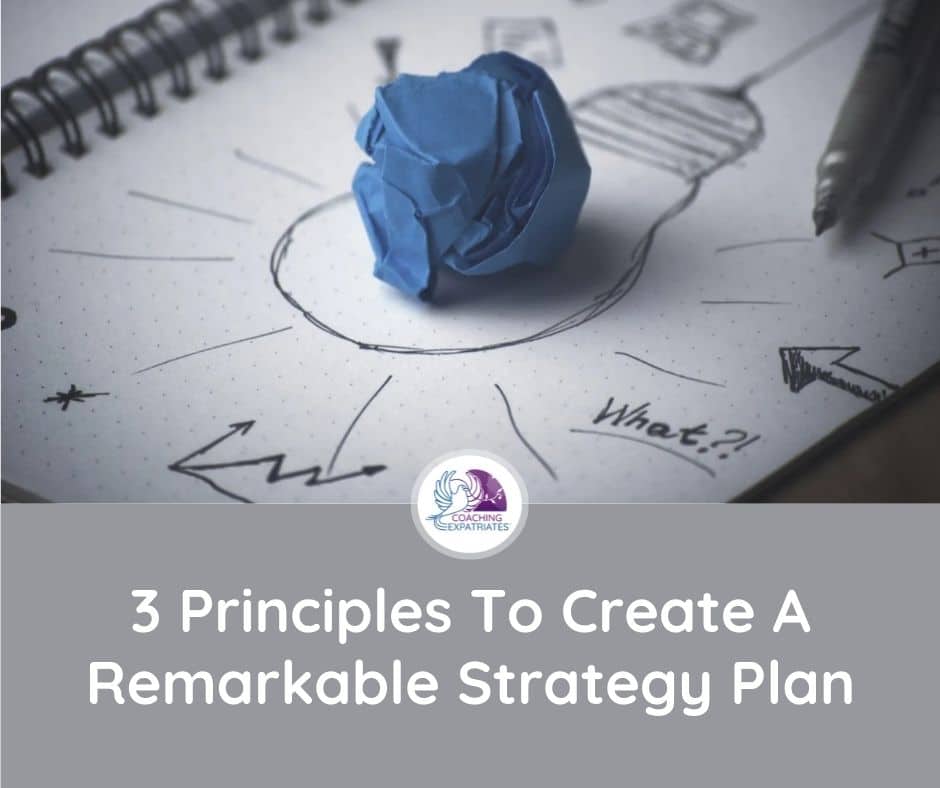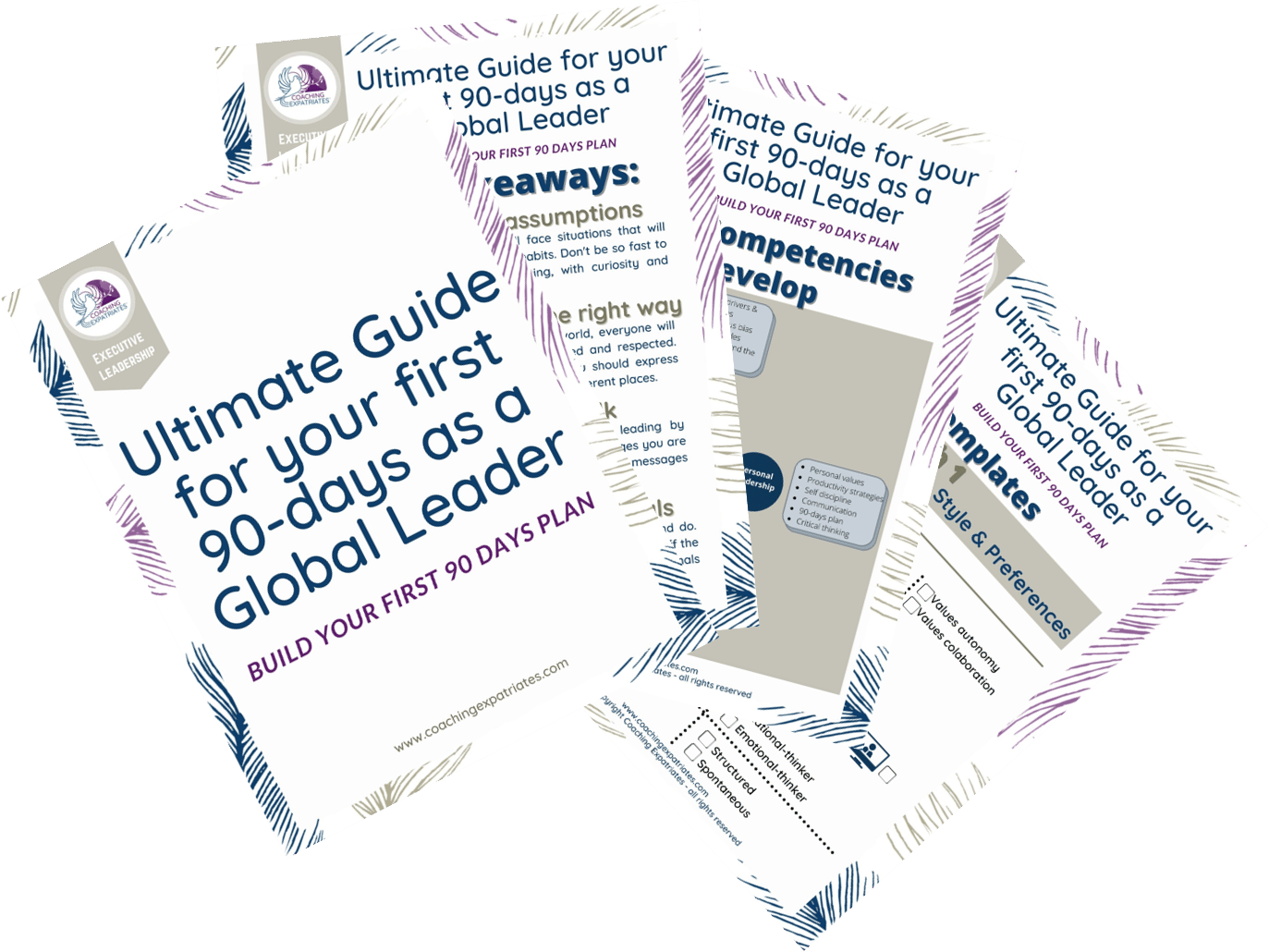While there are no specific framework or rules on how to go about outlining your Corporate Strategy Plan Event, most companies follow a similar pattern and have a similar outline.
Everything starts with the primary goal. Which, in most cases, is providing a maximum return to shareholders. Sometimes it is mind-boggling, but – yes – that’s what we are hired for: to increase shareholders’ value. Everything we do should be with their value in mind. Even if shareholders didn’t invest with money return in mind (because they want to save the planet, or whatever), they want some value in return for their money invested.
A company’s strategy always starts with the value-add. What is it that the shareholders really want? What is value for them? Then, you build the strategy to tackle how to do it in the best way, with less cost, in the shortest time, and greatest integrity possible to provide that value.
As I mention over and over, the strategy plan is not the strategy. The strategy is your target, aim and the pathway to reach there and hit the target, and your strategy plan is what you’ll use in this pathway to hit that target – a bow and arrow, or a dart, etc. If you have the bow and arrow on your hands, does it mean you have a strategy? If you don’t know where to aim and which pathway to use to get to that target, you can have a bazooka, for all that matter, but you don’t have a strategy.
Usually, many companies tend to confound the strategy plan event with tactics building. They end up putting a bunch of employees in the same place to discuss “strategy” but end up discussing what dart or bazooka they will use. If the Strategy Plan Event is not primed first with another event before – one with all major high-level executives and stakeholders – to discuss the strategy solely, the Strategy Plan Event is useless, in my humble opinion.
You can use many different processes to create your strategy, for example, the Nine Steps to Success approach or Porter’s Competitive Strategy process, among many others. And you can include in your process the use of traditional analysis tools such as PEST Analysis, Scenario Planning, SWOT analysis, Balanced Score Card, and so on, with the intent of assessing your positioning and better understanding where to go.
Whatever you use to find your target, aim, and pathway, I’d like to share 3 principle rules leveraged from this Harvard Business Review, which can significantly help you expertly craft your strategy.
1) Keep the strategy statement simple
I once coached a person who shared a strategy plan with me that comprised of more than 100 pages. In asking if there was an infographic version, the answer was that nobody actually understood any of those pages to produce a valid infographic.
Strategy does not mean complicated or elaborated. It has to be straight to the point and in a simple language that any of your employees will clearly understand and be able to act upon.
So here are some questions to guide you in creating your strategy statement:
- What is the value that your shareholder seek? (target)
- What is the company’s value proposition (aim)?
- What is the best pathway to deliver this value proposition? (pathway)
So let’s pretend we have a fictional company called I GOT THIS, and John Doe is the CEO and Chairman. John sat down with his most trusted stakeholders, and he concluded the value that the shareholders want is a steady stream of income through dividends. That’s what most of their shareholders are expecting. The value the company provides right now is a reliable membership platform to its customers, where income is collected monthly. The value-add is that the platform is growing and ensuring dividends keep coming for their stakeholders. But other than that, there is no diversification and no real strategy.
The pathway John and the stakeholders are devising is one where new steady streams of income are added to the company and an exceptional bottom line to diversify risk and increase value-add and cash flow continuity. The aim is to integrate new successful membership platforms that produce regular income streams, either by creating them from scratch (organically) or by buying one from somebody else through acquisition (inorganically).
His statement could be something like “Fortify income stream and reduce risk by integrating new membership platforms, either organically or inorganically.”
Can John go through a different pathway and aim to accomplish the same thing? Yes! Of course! And that’s the point of the strategy. Strategies are not solutions to a puzzle where all puzzles look the same, and you have to go through the same steps to solve it. There is always a creative and innovative aspect of strategies.
So the rule number one – the strategy needs to be simple enough for everyone to understand – is something that can be used by any employee to look at it and say, “Ok, given that this is the company’s strategy, my part in this is….” Fill in the blanks.
2) Recognize that a strategy plan is not about perfection
Most companies get really stuck in this aspect. They put together incredible Porter’s Competitive Strategy analysis, SWOT analysis, hire consultants and assessments, and so on, and aim the perfect strategy.
The thing is: there is no perfect strategy. There are just targets, aims, and pathways. And things change. Sometimes because of an obstacle. Or sometimes because the shareholders’ value desire changed. There are a million reasons why changes can mess up with your perfect strategy.
So the top team needs to recognize that it is not about perfection. It is about constant adjustment and some risk-taking. Yeah, of course, it’s understandable: no one wants to take risks and lose their jobs and reputation (if things go wrong). But strategy needs a flair of innovation and risk-taking.
So here are some questions to guide you:
- How likely are you (and your top team) open to adjustments and risk-taking?
- How well does your organization navigate change?
- How much focus do leaders have on being right versus learning?
During his talk with the stakeholders, John realized that the company is stagnated in learning new things, in our fiction example. Because this company relied too long on the current platform’s success, the job became easy for some, and most leaders and managers are stuck in their comfort zones. Strategy and Strategy Planning became for them more of the same. And that’s why the convoluted and complicated strategy plans were so long and tedious: they needed to justify more of the same as good enough. John was curious about what the team could come up with, now that the statement clearly stated that “more of the same” has no space in the strategy.
3) Make the strategy plan logic explicit
Your strategy needs an explicit – and written – logic that is shareable and understandable. And then, comparable. Yes, that’s right, creating the strategy alone, with your target, aim, and the pathway is not enough. Once your dart, arrow, or whatever hits the mark, you have to verify how well it hit the target.
In the real world, checking the bullseye to see if it hit the center is the action of debriefing. In some companies, it is called the “post-Morten” session. Usually, you start a new year with a debrief before discussing the strategy’s new course.
And this is usually relatively overlooked. No one has the patience to go through debriefs. And that is tied with the previous topic about perfection. People think that debriefing is the same as attesting failure, which hurts their sense of perfection. But debrief is an essential aspect of growth and learning.
You measure performance, production variances, customer satisfaction, employee satisfaction, click rates, and so on. We measure basically everything. So why do companies not measure their strategies and strategy plans effectiveness?
This is something most certainly you – as a global leader – have to consider and enforce. Measuring and debriefing can make or break your business. I once saved a company from bankruptcy by merely debriefing monthly with pertinent teams until we got the strategy, tactics, and actions right. Am I a wonder woman? Of course not! I just leveraged the collective brain of the company. Your employees, together, have power. Brainpower. Alone, and without consistent debriefs, I would not have done it. And if I could do it, you can do it.
Here are some questions to guide you:
- How robust is your framework to debrief and compare your recorded logic to real events?
- How frequent and consistent is your debrief framework?
- What do you use as a method of recording and storing debriefs (history matters over time, you know)?
Let’s wrap up John’s story. By going through these questions, John realized that he has no framework for comparing and debriefing strategy. At the beginning of the year, they usually gloss over some nonsense and then go straight to the new 100 pages strategy playbook that says nothing. He quickly decided that he needs to establish a solid framework for comparing, evaluating, and discussing events versus the original strategy. And effortlessly, he understood that this would imply a significant cultural change in his company, as well as the introduction of new corporate processes. He started to see what his bows and arrows were because he got the clarity of strategy.
Final Remarks
Now that you understand what it takes to create the strategy, we will talk about how to structure your corporate strategic planning process in our next post. We will cover the 8 Elements of the Corporate Strategic Planning process and a step-by-step guide to tackle all these elements so that you can create a robust planning framework for your company going forward.
Did you like this post? If so, share with your colleagues, co-workers, company, HR, and other leaders and get their perspective on the subject. Also, consider subscribing to our newsletter. We mail only once per week, and we focus on content for global leaders in productivity, habits and mindset, and leadership skills. If that sounds great, use the form below to subscribe.







